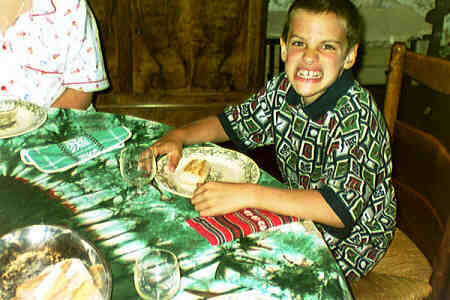
While we're here, notice too the cloth "envelopes", one with a red pattern,
the other green. Since the French almost never use paper napkins and since the
hostess will likely not do a wash between every meal, these individual designs allow each
member of the household to identify his or her own napkin at the next meal. This
function is often filled by the napkin ring ("le rond de serviette"), again each
with an individual design. Silver napkin rings are often a gift to a new-born child,
who is expected to use the ring the rest of his or her life. Sometimes, when rings
or envelopes are not available, an individual fold of the napkin can be used to identify
it later. In a house where a "vengeful" young person is charged with
clearing the table, a napkin left unfolded may well be found tied in knots at the next
meal. It should also be noted that when one is a guest for a single meal, no rings
or envelopes will be provided. If you're invited as a guest for a
single meal, be sure not to fold up the napkin when dinner's over. That could be
taken as a sign that one intends to be around for the next
repast! (Back to top of page)